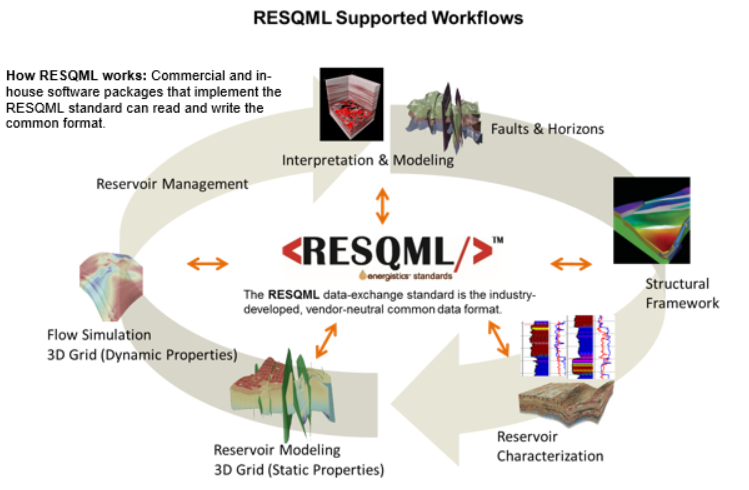1.1.2 How RESQML Helps Address These Challenges
| Topic Version | 1 | Published | 09/11/2015 | |
| For Standard | RESQML v2.0.1 | |||
RESQML-compliant software can read and write this standard, common format, eliminating data incompatibility and the need for reformatting. Figure 1.1.2-1 is a high-level overview of how RESQML works and the workflows it supports. The newest capabilities (see 1.5.2 New Capabilities in v2.0 ) help RESQML deliver these benefits:
- Delivers a "knowledge hierarchy" to organize data and transform it into knowledge.
- Increases workflow flexibility, for example, with partial model transfers that allow you to update/transfer only data that has changed.
- Supports traceability, with universally unique identifiers for each top-level data object and key metadata for data sources, updates, dates of change, etc.
- Supports uncertainty management through increased ability to run more scenarios and realizations and reliably update models.
- Defines a rich set of subsurface data objects and enables transfer of detailed models and a variety of model types.
- Improves efficiency for both petro-technical and IT professionals.
For more information on the challenges of subsurface workflows, how RESQML helps address them, and some key supported workflow use cases, see the RESQML Business Overview and Use Case Guide.
